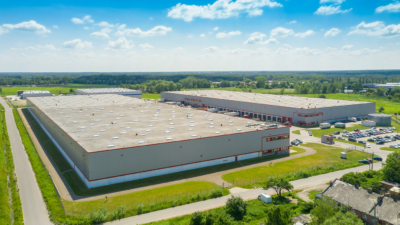The recent news that South Korea-based shipping company Hanjin filed for bankruptcy protection sent shockwaves across the logistics industry. According to a Reuters article, the cost of shipping a 40-foot container on the Busan-Los Angeles route jumped by about 55 percent immediately following the news. Rates between South Korea and the East Coast of the U.S. via Panama rose about 50 percent.
Meanwhile, ports around the globe are refusing to dock ships with Hanjin containers out of fear the ships will be seized or that the company won’t be able to pay the relevant port fees. This is leading to major shipping delays, which couldn’t come at a worse time for retailers looking to stock up for the holiday season. Retailers are also likely to feel the squeeze of increased shipping costs as many will be hesitant to pass costs on to consumers in this increasingly competitive environment.
The possible liquidation of the world’s seventh-largest freight carrier—which handles about 8 percent of the trans-Pacific volume to the U.S. according to an article in the Los Angeles Times—will likely keep shipping costs higher for the foreseeable future. But this news also holds potential impact for the real estate world, particularly in the West Region industrial markets. Hanjin controls a significant amount of terminal space in West Coast ports, especially the Port of Long Beach where Hanjin accounted for 12 percent of imported goods from January to July 2016.
In a recent Colliers International report, we highlighted the increased demand for industrial big-box space (300,000 SF+ buildings primarily used for distribution) in North America. This is largely being driven by supply chain modernization and efforts to streamline, cut costs and meet demand from e-commerce companies. Hanjin-fueled disruptions to the supply chain could threaten this growth because of the rapid increase in per-container costs, particularly for Asia-based retailers and wholesalers.
Meanwhile, North America-based retailers and wholesalers might be motivated to take another look at “reshoring” or shifting offshore manufacturing back to North America. Ironically, data from the Institute of Supply Management (ISM) released just as Hanjin news broke shows that U.S. companies remain hesitant to increase manufacturing. After showing relative strength in the past year, the ISM Manufacturing Index fell to 49.4 in August from 52.6 in July. A reading over 50 in this index means that factory activity is expanding and a reading under 50 signals contraction.
Despite this signal toward hesitation as well as weak economic growth in the U.S., the rising cost of freight and Hanjin-related volatility might push some American companies to consider reshoring. In particular, companies might reexamine factors such as rising wages in Asia, surging demand from e-commerce and the increasingly shorter lead times needed to meet customer preferences.

With these pieces coming into place, more reshoring to North America amongst U.S. companies seems likely. Still, that does not guarantee an increase in manufacturing within the United States. Countries such as Mexico, with skilled workforces and lower labor costs, are also ready to take on the manufacturing needs of American companies.
In fact, there is arguably a reshoring battle brewing between the U.S. and Mexico. I’ll delve into this and the potential real estate impacts in a report slated to be released in late September. Stay tuned!

 Colliers Insights Team
Colliers Insights Team
 Aaron Jodka
Aaron Jodka

 Stephanie Rodriguez
Stephanie Rodriguez